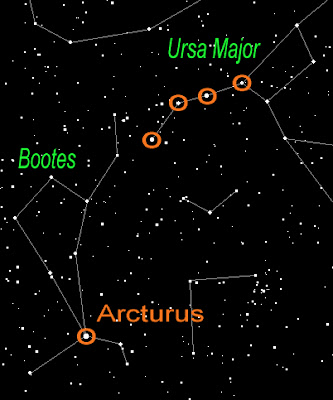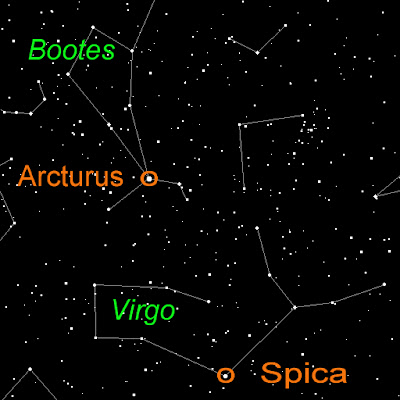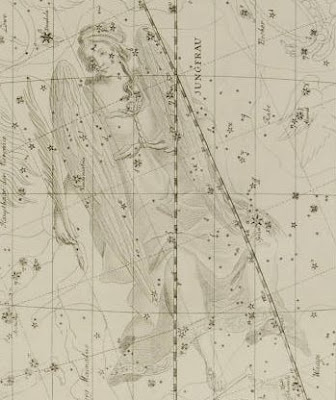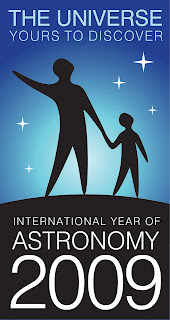A meteor or shooting star is the streak of light caused by a bit of space dust or debris (meteoroid) burning up as it encounters Earth’s atmosphere. The pyrotechnical display owes less to the size of the meteor than it does to the velocity at which it slams into our atmosphere. In fact, most meteors are merely the size of grains of sand or rice. The real whoppers–known as bolides–that explode and light up the night environment like flashbulbs, might be only the size of peas or pebbles. The occasional big chunk of rock that survives its screaming descent through our atmosphere to impact the ground (or an unfortunate vehicle) is called a meteorite.
I’m accustomed to seeing color in meteors. It’s not untypical to see yellow-colored or green-hued shooting stars, along with run-of-the-mill white ones. Some meteor showers are even known for reliably exhibiting a particular color. The Perseid meteor shower in August, for example, tends to produce meteors with a gold-colored trail.
My recent meteor of note, however, was big, bright, and unexpectedly blue–neon blue. It took my breath away. Color in meteors is caused by both the composition of the meteoroid and the composition of the air it encounters. The blue may have indicated a high magnesium content in the meteoroid.
The blue meteor was most likely a sporadic, a meteor that isn’t associated with a particular meteor shower. A meteor shower is a display that occurs annually around the same time, when the Earth encounters a specific cloud of debris left behind by a comet whose orbit brought it close to the Sun.
To determine if a meteor you spot is a sporadic, first check to see if a meteor shower is occurring. I use the calendar on the American Meteor Society’s website and check the column marked "Activity Period." If there’s no current meteor shower, then chances are any meteors sighted are sporadics.
If, however, you are within a meteor shower’s period of activity, observed meteors may be either part of the shower or sporadics. To determine which, ask yourself two questions:
1) Is the radiant–the spot in the sky from which the meteors of that shower appear to emanate–visible?
The radiant is typically located within the constellation for which the meteor shower is named (e.g., the Lyrids for Lyra and the Perseids for Perseus), and it moves slightly over the course of the shower. A number of websites, such as this one, offer star maps with the radiant location plotted for the duration of the shower.
The radiant may not, in fact, be visible at the time you spot the sporadic because the constellation where the radiant’s located may not yet have risen over the eastern horizon. It’s typical for a meteor shower radiant to rise after midnight, making midnight to morning twilight the best time to view showers. If you see a shooting star before midnight, there’s a good chance it’s a sporadic.
2) If the radiant is above the horizon, can you trace the trajectory of the meteor back to the radiant?
Observe the starting point, ending point, and direction of the meteor observed. Trace the streak of light from the ending point back through the starting point and beyond to see if that path crosses the meteor shower’s constellation of origin. If so, it’s probably associated with the shower. If not, it’s most likely a sporadic.
There are anywhere from two to sixteen sporadic meteors per hour that strike our atmosphere nightly. The farther away from city lights you get, the more shooting stars you’ll see.
As my memorable blue meteor proved, sometimes one random bit of wayward space dust is just as visually exciting as the peak of a major meteor shower.

Astronomy Essential: A comet is a dirty snowball that orbits the Sun.
A comet is a solar system body composed primarily of ice, gas, and dust trapped in the ice, in other words, a dirty snowball. The snowball begins to melt a bit if the comet’s orbit takes it close enough to the Sun. This melting of the ice releases some of the dust, which creates a "tail" of dust streaming out in the comet’s wake. Looking at the dust tail shows us the comet’s path.
A comet has a second tail, which is usually not as easily visible as the dust tail. Electrically charged gas particles streaming from the comet are blown back by the solar wind, a continuous stream of particles given off by the Sun. Therefore, this ion tail, as it is called, always points away from the Sun.












